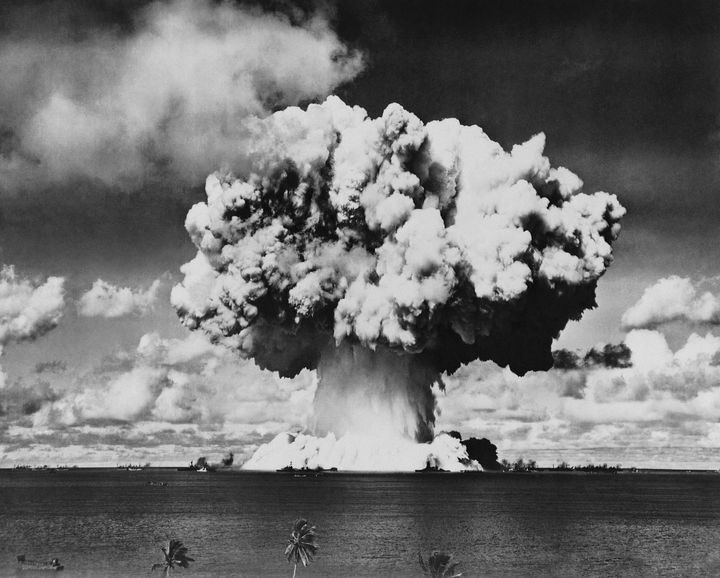
Retrofile RF/Getty Images
Why do nuclear bombs leave little longtime radiation, while nuclear reactor meltdowns could last for centuries? originally appeared on Quora: the place to gain and share knowledge, empowering people to learn from others and better understand the world.
Answer by Viktor T. Toth, IT pro, part-time physicist, on Quora:
Why do nuclear bombs leave little longtime radiation, while nuclear reactor meltdowns could last for centuries? Well, for starters, there is the amount of fuel involved.
Little Boy (the bomb dropped on Hiroshima) contained 64 kilograms of highly enriched (weapons grade) uranium. Of this, less than a kilogram actually underwent nuclear fission, producing fission products including short-lived but dangerous isotopes, and also producing the neutron radiation “flash” that induced secondary radioactivity in some materials that absorbed those neutrons.
In contrast, an RBMK reactor like the one that blew up in Chernobyl contains 100–150 fuel assemblies, each with over 100 kg of partially enriched uranium. So right there, the amount of fuel in the reactor is several hundred times more than the amount of fission fuel in a nuclear bomb. And whereas a nuclear bomb uses its fuel rather inefficiently (the explosive fission process takes place in milliseconds), a reactor does a more thorough job consuming its fuel over the course of several months before a fuel assembly is replaced.
Furthermore, the fission byproducts remain in the fuel assembly. Depending on the reactor design, these may, in fact, include materials a lot worse than the uranium fuel, such as weapons grade plutonium. Then there are also all the irradiated parts of the reactor that have been continuously exposed to radiation, resulting in secondary radioactivity and more nasty byproducts.
When a nuclear bomb explodes, it is dispersed over a large area. In case of a reactor accident, some of the fuel is dispersed, but a lot of it remains in place, at the reactor site. So this represents a concentration of radioactive materials that just does not occur in case of a bomb. And because all of it sits on the ground, there is the chance of leakage, e.g., into the water table, contaminating the water supply of a large region.
A nuclear reactor site may also contain other sources of radiation. For instance, one of the biggest concerns after the Fukushima accident was due to spent fuel pools located near the meltdown sites.
Having said all that, let us not forget that the Chernobyl Exclusion Zone became possibly the biggest accidental wildlife sanctuary in Europe, if not the world. That is because while radioactive contamination takes its toll, it’s nothing compared to what humans do. Remove most of the humans and even if you add a substantial amount of radiation, Nature thrives.

A resident of Pripyat, 30 years after the disaster. From Animals Rule Chernobyl Three Decades After Nuclear Disaster
This question originally appeared on Quora - the place to gain and share knowledge, empowering people to learn from others and better understand the world. You can follow Quora on Twitter, Facebook, and Google+. More questions:
